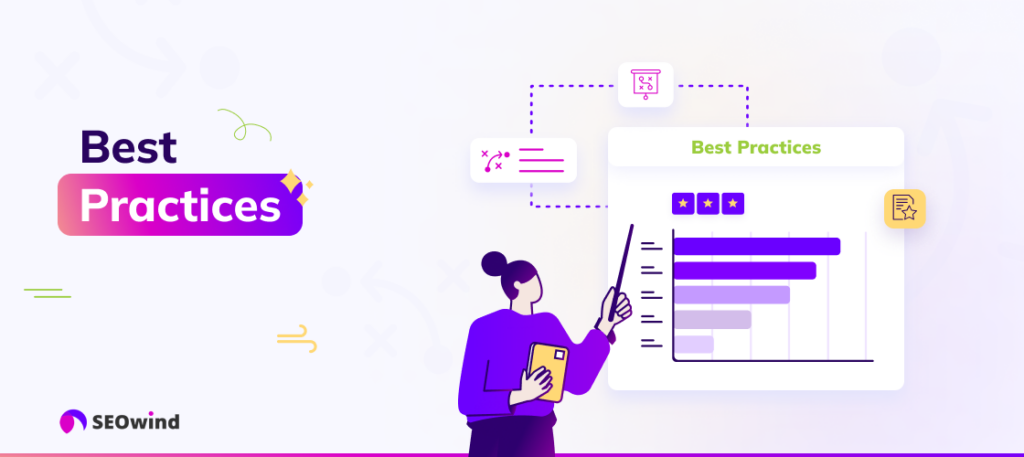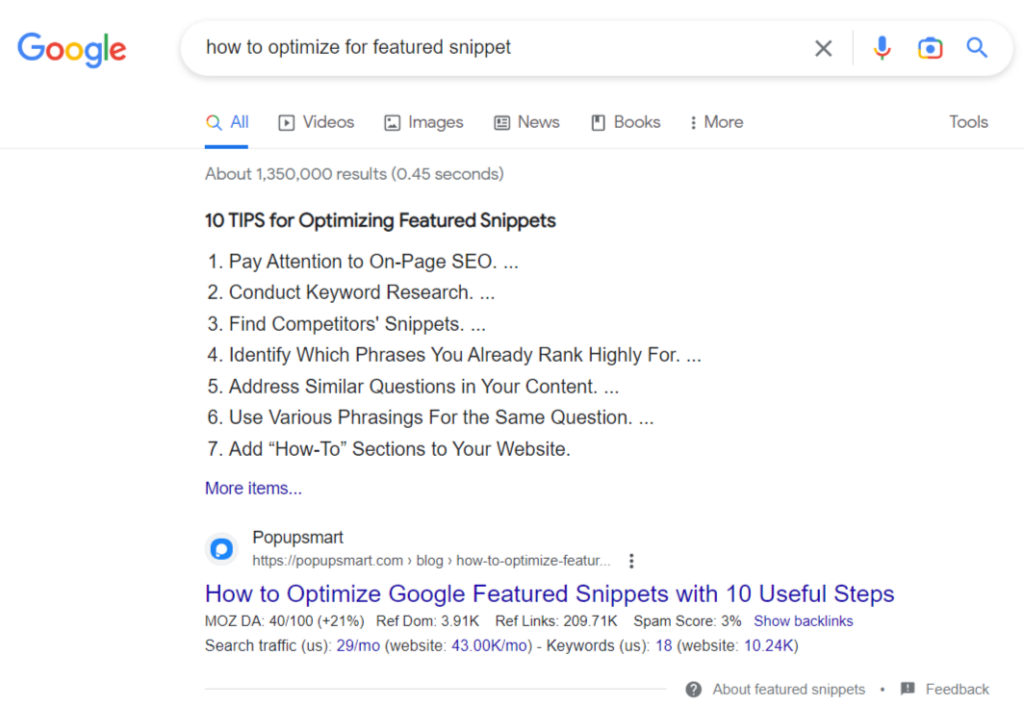Are you struggling to drive organic traffic to your blog? Do you want to learn how to write compelling content that attracts search engines and human readers? Look no further! This comprehensive guide walks you through the essential steps to create SEO-friendly blog posts that effectively engage your audience and boost your ranking on Google. With these proven strategies and tips under your belt, you’ll soon see increased traffic and robust improvements in search engine visibility.
What is an SEO-Friendly Blog Post?
An SEO-friendly blog post is specifically crafted content designed to rank well with search engines like Google while providing value and a pleasant reading experience for humans. This delicate balancing act requires understanding search engine algorithms, keyword selection, user intent, great writing skills, and effective formatting techniques.
To achieve this balance between satisfying search engines and engaging readers:
- You must place the right keywords within the text without disrupting readability or sounding unnatural.
- Your article should be coherent, with a logical flow of information that makes it enjoyable for users to read.
- Different elements, such as headings, images, and internal/external links, need optimization for better indexation by search engines.
- The topic must hold relevance and value for readers so they are inclined to share or link back – helping your blog gain authority in your niche.
Achieving the pinnacle of an SEO-friendly blog post can attract more organic traffic leading to better search results. It ultimately translates into increased brand exposure, and enhanced credibility among peers/customers/clients/prospects alike, all contributing factors toward business growth objectives!
How can Writing Blogs Help SEO?

When writing blogs for your website, optimizing them to rank higher on search engines is crucial. Incorporating the right tactics for SEO (Search Engine Optimization) will ultimately increase your blog’s visibility, drive organic traffic, and improve its authority online. Let’s discuss why writing blog posts optimized for SEO is essential.
Increase Search Engine Visibility
Search engines like Google place a high emphasis on valuable content when ranking websites or individual pages. Creating insightful and informative SEO-friendly blog posts significantly improves your chances of appearing within top search results for targeted keywords related to your niche.
Boost Organic Traffic
Increased visibility on search engine result pages leads to a higher click-through rate, naturally driving more organic traffic to your site. With well-optimized blog posts that genuinely resonate with your audience and address their needs or queries, users are more likely to find and engage with your content.
Establish Authority and Expertise
Writing in-depth articles showcasing knowledge about a particular subject helps position you as an industry expert or thought leader. As readers grow trust in the quality of the information provided in your blogs, they’re more likely to share those articles within their network – subsequently improving credibility among both users and search engines.
Enhance User Experience
A critical component of successful SEO optimization is offering an exceptional user experience (UX). Crafting engaging content with visually appealing elements ensures reader interest throughout the blog post. Furthermore, by using proper headings structure, bullet points, short paragraphs, and explicit language — you tailor blog content that’s easy to digest and understand by all audiences.
Foster Meaningful Connections through Comments & Social Shares
Compelling blog posts often lead readers to leave comments sharing their thoughts or opinions. These interactions expand a company’s online community while increasing opportunities for networking and collaboration. Engaging comment sections also complement SEO efforts, indicating an active community surrounding a particular topic. Social shares amplify your content’s reach across various platforms, potentially gaining links from other reputable sites.
How to Write Blog Posts for SEO – Step by step

Step 1: Think before you write!
Before diving into writing, it’s essential to plan your blog content strategically. Consider your target audience and what kind of information they would find valuable. It’s also crucial to decide what goal you want to achieve – for example, increasing traffic, generating leads, or establishing authority in your industry.
Once you’ve identified these factors, brainstorm potential keyword ideas and topics that align with your goals and resonate with your target audience. Remember that quality content is vital for attracting readers and boosting SEO rankings.
Step 2: Keyword Research for SEO Blog Writing
Keyword research is essential in creating a successful SEO-optimized blog post that ranks high on search engines. Start using tools like Moz Keyword Explorer, Ahrefs, or SEMrush to do keyword research and identify popular keywords relevant to your topic.
Pay attention to the competition and search volume when selecting your primary target keyword. A useful strategy is to choose long-tail keywords with lower search volume but less competition than broad or generic terms.
Ensure you incorporate some of these keywords organically throughout your article while avoiding keyword stuffing.
💡 More Resources on content research: 1. The ABCs of SERP Keywords 2. How to do SEO Keyword Research 3. Discover the Best Keyword Research Tools of 2023 4. How to Do Keyword Research in minutes – Practical Tips
Step 3: Understand Search Intent
To create a blog post that satisfies both users and search engines, understand the intent behind users’ search queries related to your chosen topic. There are four types of search intent:
- Informational: Users want general information.
- Navigational: Users are looking for a specific website.
- Transactional: Users seek purchasing options.
- Commercial Investigation: Users explore products/services before making a purchase decision.
Understanding the user’s purpose lets you craft blog content that directly addresses their needs, achieving better engagement rates and higher SEO rankings.
Step 4: Create Blog Post Outline – Get Your Structure Right
A clear structure makes it easier for readers and search engines to navigate through your blog post. Create an outline that includes the introduction, main points (subheadings), and conclusion before writing your article.
Want to learn more on how to create blog post outlines quickly at scale: visit our Guide on: How to Write a Blog Post Outline [Steps, Tips and Templates].
This ensures you maintain focus while writing and helps organize your ideas logically. Additionally, a clear structure increases readability – crucial for SEO purposes.
Step 5: Get the Tech Specs Right
Ensure all technical aspects of your blog post are optimized for search engines. Some key considerations include:
- URL structure: Create a short, descriptive URL containing the target keyword.
- Title tag: Craft an engaging title in alignment with your main keyword but keep it within 60 characters to avoid truncation.
- Heading tags: Use H1 for your title and appropriate subheadings such as H2 or H3 for other sections to establish hierarchy.
These simple yet crucial optimizations go a long way in boosting SEO rankings.
Step 6: Write according to Search Engines rules
Adhering to proven SEO guidelines when crafting your content helps improve its chances of ranking well on Google. To create an effective SEO-friendly article, incorporate these fundamental principles:
- Keyword Usage: Integrate primary and secondary keywords naturally throughout the text, including headings, subheadings, meta tags, and image alt texts.
- Readability: Make sure your writing is simple to understand by maintaining short sentences (max 15 words), paragraphs with fewer than 100 words, and using transitional phrases or logical connections between sentences.
- Formatting: Use markdown features like headings (H1-H4), bullet points, ordered lists, or unordered lists for clarity – this enhances the user experience while allowing search engines to understand your content better.
Step 7: Publish and submit to Google
Once you’ve written a compelling piece optimized for users and search engines, it’s time to publish! However, don’t assume Google will crawl it automatically; accelerate indexation by submitting the URL via Google Search Console > ‘URL Inspection’> ‘Request Indexing.’ Also, pay attention to the following:
- Page load time: Ensure your blog post loads quickly using optimized images, lazy loading, and minimizing HTTP requests.
- Mobile Responsiveness: Check if the content correctly displays on mobile devices for better SEO ranking and user experience.
Step 8: Get backlinks
Quality backlinks act as ‘votes of confidence’ that signal search engines like Google about your content’s credibility, trustworthiness, and relevance. Building a robust backlink profile should go hand-in-hand with publishing SEO-friendly blog posts. Here are some tactics to garner high-quality backlinks:
- Guest posting on authority websites within your niche
- Creating visually appealing infographics and encouraging others to share/embed them
- Reaching out to influencers in your industry for collaborations or mentions of your article
- Actively participating in social media groups, forums (like Quora), or blog comments—contributing value while linking to your relevant post when appropriate.
Taking these steps seriously will elevate your content game substantially— resulting in increased traffic, better rankings, and ultimately enhanced digital presence through optimized SEO-friendly articles.
Best Practices for Writing SEO-Friendly Blog Posts

Use Short Introductions
When writing the introduction to your blog post, keep it short and engaging. Aim to capture the reader’s interest within the first few sentences by immediately addressing their query or problem. A concise introduction helps set a clear expectation for readers, increasing the likelihood that they’ll read further into your content.
Use paragraphs and headings
Break up your text with relevant paragraphs and informative headings. This practice improves readability and allows search engines to understand the structure of your content better. Additionally, well-structured content can earn featured snippets on search engine results pages (SERPs), thus improving visibility even more.
Use headings correctly
Using different heading levels effectively is vital for both SEO and user experience. Be sure to use H1 for your main title, followed by H2 subheadings for new sections/topics, and H3/H4 tags for covering minor points related to those topics within each section.
Keep your paragraphs short
Shorter paragraphs are much easier on the eyes — aim for between 50-100 words per paragraph to ensure readers can quickly grasp the information you’re sharing without overwhelming them with lengthy blocks of text.
Do make use of keywords (but not keyword stuffing)
Naturally incorporate relevant keywords throughout your article while avoiding overuse, which may result in keyword stuffing — a tactic frowned upon by search engines like Google. Instead, use LSI keywords (latent semantic indexing) or synonyms that convey the same meaning. Hence, you maintain keyword relevance without compromising readability.
Use transition words
Smoothly connect clauses, sentences, or ideas with appropriate transitional phrases such as ‘however,’ ‘meanwhile,’ or ‘on the other hand.’ This technique benefits readability and keeps a natural flow throughout your blog post.
Optimize the length of your article
The ideal length of an SEO-friendly blog post varies depending on factors such as the nature of your content and your target audience. However, aiming for around 1,000-1,500 words in a blog post is a good starting point to cover essential details while still holding the reader’s attention.
Optimize your meta description
Craft a compelling meta description that accurately summarizes your blog post within 155 characters. This snippet provides searchers with valuable information about your content when they encounter it in SERPs, which may influence their decision to click on it.
Optimize your images and other media elements
Give visual appeal to your blog posts by incorporating relevant images, videos, or infographics. Remember to optimize file sizes and use descriptive alt tags containing keywords. Ignoring this step will negatively impact loading times and create accessibility issues — both problematic for search engines when ranking web pages.
Link to existing content
Internal linking helps establish site hierarchy while also benefitting user experience by directing readers towards more relevant information on your website. Outbound links to authoritative sources strengthen credibility and provide additional helpful resources for readers.
Add content regularly
Publishing new articles signals that your website is actively maintained and offers updated perspectives, making it more attractive to search engines and users who prefer fresh insights over outdated views on any given topic. Aim for different types of blog posts (e.g., listicles or how-tos) targeting various aspects of the subject matter you want to rank highly in searches.
Types of Blog Posts That Will Increase SEO
When focusing on how to write blog posts for SEO, it is also essential to consider the types of blog posts that resonate well with readers and search engines alike. These types of blog posts are proven to boost traffic and visibility while providing value to your readers.
“How to” Blog Posts
“How-to” blog posts are highly effective in increasing SEO due to their practical nature and ability to answer specific questions or solve problems. People often search these topics, which can help you rank higher on search engine results pages (SERPs). When creating a “how-to” post, focus on:
- Explaining step-by-step instructions
- Providing comprehensive answers to anticipated questions
- Using relevant keywords related to your topic throughout the text
You’ll increase engagement, dwell time, and organic reach by addressing common user queries effectively.
Listicles: Introduce Many Ideas
Listicles offer clear organization and ease of reading — two factors loved by readers and search engines. This format presents ideas as an ordered or unordered list covering various points under one central theme. Users appreciate being able to scan through the content provided by listicles quickly.
To make listicle articles more effective for SEO:
- Include numbers in blog post titles (e.g., “10 Ways to…”)
- Incorporate relevant keywords within the subheadings
- Use internal links to help users navigate your site seamlessly

Curated resource
Curated resource articles consolidate valuable information from multiple sources in one location. They present the best resources available based on relevance or quality, saving time for your audience members who would otherwise spend hours searching for this information individually.
When writing curated content:
- Carefully select reliable sources
- Don’t copy entire pieces but rather provide concise summaries
- Always link back and original credit authors
These resource-centric blog posts establish your blog as an authoritative hub for industry-specific information, strengthening SEO performance.
Cheat Sheets, Checklists, Templates
Creating cheat sheets, checklists, and templates provides your audience with helpful tools to implement immediately. These value-add materials are commonly shared and bookmarked by readers who appreciate the practicality and efficiency, enhancing SEO outcomes.
To create these types of content:
- Ensure a clear layout and logical flow,
- Make them easy to digest,
- Offer downloadable versions (e.g., PDFs) to encourage shares.
Use Case Studies to Enhance SEO Copywriting
A case study is a powerful storytelling method that shows real-life examples of how your product or service solved customers’ problems. By showcasing genuine experiences in detail, you’re offering invaluable social proof to prospective buyers. This evidence-based content attracts links organically from other sources and improves your search ranking.
For compelling case studies:
- Focus on customer-centric narratives,
- Include specific details about the results achieved,
- Incorporate data-driven visuals when possible.
Use Visual Content to Increase Engagement
One effective strategy for increasing engagement and improving SEO ranking is incorporating visual content into your blog posts. The use of visuals not only attracts viewers but also makes it easier for them to understand complex topics—ultimately resulting in a more enjoyable reader experience. Here are some visual elements you can incorporate when writing blogs for SEO:
- Images: Relevant and high-quality images will break up walls of text and provide readers with substantial context.
- Infographics: These visually appealing graphics simplify complex data or concepts, making them more digestible for the reader.
- Videos: Embedding videos within a post adds variety and further explains certain aspects of a topic without requiring the reader to leave your page.
- Charts and Graphs: Visualizing statistics through these tools allows straightforward data interpretation.
Remember that while using visuals is an excellent way to increase engagement, it is essential to optimize each element properly by adding captions, alt tags containing primary keywords, and resizing where needed without compromising quality —all critical steps toward a successful how-to-write SEO-friendly blog post campaign.
Be Current – Latest news, trends and insights
Staying current plays a significant role in enhancing blog post visibility on search engines. Keeping your audience updated with the latest news, trends, or insights related to their interests will help you rank higher in searches while generating natural backlinks from other websites quoting your material as a reputable source. This means you need access to ideas about creating how-to-write-blog-posts-for-seo articles before they become outdated or irrelevant.
To maintain relevancy and ensure that your content stays fresh, consider the following:
- Newsjacking: Capitalize on trending topics by relating them to your niche or industry. Including relevant keywords when discussing a recent development can improve the visibility of your blog post.
- Update Old Posts: Regularly review and update outdated information in older posts to maintain accuracy and showcase your commitment to providing evergreen content.
- Stay Informed: Subscribe to current newsletters, join online forums, and follow influential personalities within your domain to gather new ideas for writing SEO-friendly blog posts.

Writing Engaging Content for People
When writing SEO-friendly blog posts for your website, catering to your audience is critical. You want to provide engaging and informative content that’s not only optimized for search engines but is also enjoyable for readers on a deeper level.
Emphasize Value and Relevance
First, create blog posts that offer real value to your target audience. Identify your readers’ pain points and interests and create content that practically addresses their needs or solves problems they might face. This will make your content more relatable while consistently bringing traffic to your site.
Adopt Relatable Language
Write in simple, clear language that reflects how people naturally speak. Avoid using jargon or technical terms that may confuse or alienate readers. Instead, use everyday words and phrases most familiar to your audience so they’ll understand the information you share correctly.
Here are a few tips:
- Use active voice when constructing sentences.
- Utilize suitable keywords related to the topic.
- Maintain sentence lengths between 10-15 words.
- Keep paragraphs short (50 – 100 words).
Utilize Storytelling Techniques
Incorporate storytelling into your SEO copywriting by sharing anecdotes, testimonials, case studies, and personal experiences from others who faced similar challenges or situations. Stories help connect with the reader emotionally while illustrating key concepts effectively.
Incorporate Visual Aids
People are captivated by visual stimuli; include images, videos, infographics, or any other type of multimedia within the blog post whenever possible. These elements can enhance comprehension levels while breaking up large chunks of text—making it easier for readers to consume and digest the material.
Keep these pointers in mind:
- Use copyright-free images or get permission before using copyrighted materials.
- Optimize image file size for faster page load times.
- Add relevant alt-tags to improve search engine rankings.
Use Different Content Formats
Including various content formats, such as lists, bullet points, animations, and comparison charts, make it more enjoyable for readers to consume information. Experimenting with different styles can keep your blog fresh and help improve user experience and maintain your audience’s interest.
Writing engaging content isn’t just about fulfilling SEO requirements—it’s also about genuinely connecting with your audience. Combining some or all of these approaches will increase the likelihood of ranking higher on search engine results pages and ensure that readers will return to your site time and time again.
Use Storytelling and Humor in SEO Copywriting

Incorporating storytelling and humor in your blog posts enhances reader engagement. It improves the chances of search engines ranking your content higher. While you aim to write blogs for SEO, ensuring the content appeals to human readers is crucial. Thankfully, weaving storytelling techniques and humor throughout your pieces can make this goal attainable.
Benefits of Using Storytelling in Blog Posts
- Connect with Readers: Sharing a story lets you connect with your readers emotionally. It helps them understand the context better and become invested in your words.
- Boost Memory Retention: Research has shown that people are more likely to remember information presented through storytelling than plain statements or facts.
- Facilitates Learning: Readers who engage with stories comprehend complex ideas more naturally, leading to a simplified learning process.
- Makes Content Shareable: Story-based content tends to be shared more among social networks, increasing site traffic and boosting SEO value.
Incorporating Humor into Your Writing
- Use Puns and Wordplay: Clever twists on familiar words or phrases will make your reader smile while reinforcing the main message effectively.
- Relevant Anecdotes: Share relatable anecdotes or personal experiences that showcase humor without straying too far from your primary topic.
- Juxtapositions: Contrasting two situations or images can generate humor while keeping your writing informative and engaging.
- Lighten up Technical Subjects: Difficult concepts might turn off some readers; however, using jokes or metaphors makes it easier for them to grasp without feeling overwhelmed.
- Timing Matters: Remember that timing is everything in humor—well-timed one-liners or humorous asides will enhance overall readability without causing distractions.
When crafting SEO-friendly blog posts, remember to balance providing relevant information and entertaining your readers. Using storytelling and humor doesn’t mean compromising quality or diluting essential points. Instead, it adds a layer of creativity that showcases your unique voice and makes your content stand out in the competitive world of SEO copywriting. By incorporating these techniques, you’ll find yourself writing captivating blog posts that attract human readers and search engine algorithms.

On-Page SEO Copywriting Strategies
On-page SEO means optimizing individual web pages, including their content and HTML code. Creating an exceptional blog post that ranks well in search engines requires focusing on various on-page SEO copywriting strategies. Here are some crucial tips you should consider when optimizing your content:
Focus on Title Tags
Title tags define the topic and theme of your page, which helps search engines determine the relevance of your content. They appear as clickable headlines in SERPs (search engine results pages) and browser tabs. Remember that a reasonable title tag should be concise (around 60 characters) and incorporate your primary keyword.
Sensible Use of Keywords
Integrate relevant keywords naturally throughout your blog, mainly focusing on the following:
- Post headings and subheadings,
- First paragraph,
- Last paragraph,
- Alt tags for images,
- Adding long-tail keywords with low competition can also improve your chances of ranking higher in Google searches.
Optimize URL Structures
A clean URL structure is easy for users and search engines to understand. Include the target keyword in the URL while avoiding unnecessary characters or ambiguous terms.
Implement Schema Markup
Schema markup is a form of structured data added to HTML that makes it easier for search engines to comprehend the context of your content. Using schema markup can enhance your blog’s appearance in SERPs by displaying rich snippets such as star ratings or event details.
Internal Linking Strategy
Linking internally within your website allows visitors to navigate different pages while boosting overall engagement rates. Moreover, appropriate internal links help search engines discover new posts and boost authority signals across multiple pages.
Here’s how you can effectively establish internal links:
- Use descriptive anchor text that relates to the linked post’s topic.
- Add at least two to three internal links per post.
- Aim for a logical browsing progression between related content.
Optimize Multimedia Elements
Optimize visual elements such as images and videos for performance and SEO rankings. To achieve this, consider these steps:
- Compress images to reduce loading time without sacrificing quality.
- Incorporate descriptive alt text with relevant keywords for each image.
- Use informative file names for your media files.
By incorporating these on-page SEO copywriting strategies, you’ll enhance the user experience and increase the likelihood of your blog posts ranking higher in search engine results pages. This will ultimately lead to increased traffic and better online exposure for your blog.
Off-Page SEO Optimization Techniques
Off-page SEO optimization focuses on improving your website’s visibility and reputation beyond its boundaries. While high-quality content and on-page optimization are crucial, off-page factors also significantly enhance your blog’s overall performance. Here are four vital off-page SEO techniques you should prioritize for better search engine rankings:
Build High-Quality Backlinks

Backlinks, or inbound links from other websites, remain essential factors search engines use to gauge a site’s authority. To improve your off-page SEO, aim to acquire high-quality backlinks naturally by:
- Creating valuable and shareable content
- Guest blogging on reputable industry blogs
- Engaging on social media platforms
- Collaborating with influencers within your niche
Ensure these links come from trustworthy sites with authority, as low-quality backlinks from other websites can negatively impact your rankings.
Social Media Marketing
Actively sharing and promoting your content on social media aids two purposes: it drives direct traffic to your website and increases its visibility to potential link-builders. Remember the following practices when sharing on social media:
- Share links to new posts across all your active platforms
- Interact with users who comment or share your content
- Use appropriate hashtags and keywords within your post descriptions
Encouraging engagement via likes, shares, and comments signals search engines about the relevance and value of your blog post.
Leverage Content Syndication
Content syndication expands reach by republishing existing content on third-party websites like Medium or LinkedIn Pulse while providing canonical tags pointing back to the source. It allows you to target a broader audience without worrying about duplicate content penalties since credible syndication sources appropriately attribute credit using canonical URLs.
Always double-check if syndicated articles include the canonical tag before proceeding.
Local Citations & Business Directories
For locally-focused businesses or blogs, claiming your Google My Business (GMB) listing and submitting it to relevant business directories drives organic traffic to your site. Create consistent listings using standardized NAP (Name, Address, Phone Number) details across all platforms.
By implementing these off-page SEO optimization techniques, you’ll enhance the credibility of your blog posts while fostering growth in visibility. Maintaining a balanced mix of on-page and off-page SEO strategies is crucial for optimal results.
Create Irresistible Headlines for SEO Copywriting
An irresistible blog headline is crucial when it comes to creating SEO-friendly blog posts. It’s the first thing your readers see and significantly influences their decision to click through and read your content. Here are some practical tips for crafting good and interesting titles, integrating relevant keywords, and boosting your search engine ranking.
Incorporate Primary Keywords
Incorporate the target keywords or phrases for the particular blog post into your headline—this helps search engines recognize the primary topic of your blog article. Ensure you include these keywords without disrupting the natural flow of language or making the title overly long.
Be Clear and Concise
When crafting a headline for SEO writing purposes, prioritize clarity and conciseness over clever wordplay. Conveying the value proposition of your blog post is more important than creating intrigue, as readers tend to appreciate well-defined information rather than ambiguous titles.
Use Engaging Language
A great headline should pique curiosity and encourage people to read further—using persuasive language can make all the difference! Employ power words such as “exclusive,” “limited,” or “surprising” as they evoke strong emotions and prompt clicks while conveying value.
Leverage Numbers and Data Points
Using numbers can effectively grab attention; statistics and figures generate interest because they give readers an idea about what they will learn from your post. Listicles (e.g., “5 Ways To Improve Your Keyword Research”) have proven successful due to their clear structure and ability to deliver on expectations.
Ask Thought-Provoking Questions
Posing questions makes headlines interactive—encouraging users to think deeply about how your content relates to their needs or interests fosters engagement with your post. Ensure that questions align with user search intent by keeping them relevant to search term and your target audience.
Test Multiple Headline Variations
Experimentation is vital when it comes to creating the perfect SEO-friendly headline. Write down several variations for each blog post, and analyze their potential impact on readership. Tools like CoSchedule’s Headline Analyzer can offer insights into the effectiveness of different headlines—helping you make data-driven decisions for your copywriting strategy.
In conclusion, compelling headlines are critical in driving traffic to your SEO-friendly blog posts, as they determine whether or not users will engage with your content. Strive to combine persuasive language, relevant keywords, clear value propositions, and questions that align with user search intent to increase visibility and make your articles stand out. With enough persistence and practice, crafting irresistible headlines will soon feel like second nature!
Clarity of Purpose in SEO Copywriting

Understanding the purpose behind your blog post is crucial for crafting an effective and SEO-friendly piece. A clear purpose will not only benefit your readers. Still, it will also improve search engine rankings by allowing Google to understand your content better. In this section, we’ll discuss how to clearly define the purpose of your article and some strategies to maintain focus throughout the writing process.
Know Your Target Audience
The first step towards achieving clarity in your SEO copywriting is knowing whom you’re writing for. By understanding your target audience’s needs, preferences, and language style, you can tailor your content accordingly and keep them engaged. Take note of demographics like age, gender, interests, and location when considering the tone and approach for your article.
Define The Objective Of The Blog Post
Your blog post should have a clear objective that aligns with user intent and business goals. This may include driving conversions, generating traffic or leads, educating readers about a specific topic, or offering solutions to common challenges customers face. Define this objective early on as it will help shape all aspects of the content – from keyword research to structuring and formatting.
Stay Focused Throughout The Writing Process
Keep the following points in mind while writing your blog posts:
Maintain a Consistent Tone
Consistency in tone keeps readers engaged with every sentence written, besides maintaining clarity on what they can expect throughout the entire piece. Use active voice sentences to communicate more directly, leading to more straightforward explanations of complex topics.
Create Sections That Relate To Your Main Purpose
Divide your blog post into organized sections using relevant subheadings. Summarize them through concise H2 or H3 tags – their main goal is ensuring each segment seamlessly connects back to articulating the overall motive of your piece while reflecting organic searching patterns compatible with search engines’ algorithms.
Incorporate Relevant Keywords
Use related keywords naturally within your content, giving Google and other search engines context about the purpose of your article. However, avoid excessively using these key phrases. Unnatural repetition might be called “keyword stuffing,” which could negatively impact your rankings.
Review and Revise Your Content
Finally, review your content thoroughly to ensure it sticks to its primary purpose. Eliminate unnecessary information that doesn’t align with the primary objective or add value for readers. Keep sentences short (15 words maximum) and watch for grammatical gremlins/ plagiaristic sentiments to uphold readability.
Checking for Grammatical Mistakes and Plagiarism
Ensuring the content is free from grammatical mistakes, and plagiarism is crucial when crafting SEO-friendly blog posts. This improves the readability of your articles and maintains a positive reputation with search engines like Google. In this section, we will discuss some practical tips on how to check for grammatical errors and avoid plagiarizing others’ work while writing.
Utilize Grammar and Spell-Check Tools
Grammar and spell-check tools are indispensable assets for any content writer. Here are three reliable solutions you can use:
- Grammarly: This popular tool checks grammar, spelling, and punctuation and even offers style suggestions based on your writing content.
- Hemingway Editor: An easy-to-use online tool that helps simplify language usage while maintaining clarity in your text—ideal for targeting lower readability scores.
- Microsoft Word or Google Docs: Both word processors have built-in grammar and spell checkers that can identify many common errors.
While these tools cannot always detect more nuanced issues or replace human editors, they help significantly reduce basic errors.
Re-read Your Work with Fresh Eyes
Taking a break between writing and proofreading allows your mind to refresh its perspective on the content so that you can spot possible grammar mistakes more easily when reviewing.
Consider Hiring Professional Proofreaders/Editors
If budget permits, hiring experienced proofreaders or editors ensures higher quality outputs by allowing industry professionals to review your work thoroughly before publication.
Avoid Consecutive Prepositions or Passive Voice
To increase readability, try to minimize instances where two prepositions occur together or passive voice dominates large parts of an article—such as “This step has been completed by…” instead of “Complete this step…”
Use Plagiarism Check Tools
Several plagiarism detection tools help determine similarities between your content and other published works. Some popular ones include:
- Turnitin: A widely-used tool for detecting plagiarism in academic papers.
- Copyscape: Checks the web for similar content that may signify plagiarism and reports any closely matching text within minutes.
- PlagScan: Identifies duplicate or identical sentences to prevent you from accidentally copying someone else’s work.
With these tips, you can ensure that your SEO-friendly blogs are free from grammatical mistakes and plagiarism while maintaining a professional tone that meets industry standards. Following best practices like appropriate keyword usage, engaging content, and protecting your reputation with accurate reporting will ultimately lead to better search engine rankings and increased organic traffic to your website.
Frequently Asked Questions on SEO-Friendly Blog Posts

How many blog posts do I need for SEO?
The number of blog posts required to optimize your website’s search engine ranking will vary depending on your business, target audience, and competition in your industry. However, a general guideline suggests publishing at least one high-quality, well-optimized blog post per week.
Some factors to consider when determining the ideal frequency for blog posting are:
- The needs and preferences of your target audience,
- Your capacity to consistently produce high-quality content,
- How competitive your niche or industry is.
Don’t focus solely on quantity; prioritize creating valuable content tailored to engage with your audience while incorporating the principles of how to write blogs for SEO.
Do you need to write blog posts for SEO?
Yes, writing regular, optimized blog posts does contribute significantly to improving website rankings on search engines. Blogs allow you to create fresh and engaging content that keeps your site current, which signals to Google that it should regularly crawl and reevaluate your site.
Furthermore, crafting informative content helps establish trust and authority for your readers and search engines. Beyond just increasing organic traffic, quality SEO-friendly blog posts are vital in digital marketing for building brand recognition and driving conversions.
In conclusion, readily investing time into learning how to write SEO-friendly articles effectively enhances various elements of digital marketing strategy, such as online visibility, customer engagement, lead generation, etc.
What is the best way to write an SEO blog post?
To guarantee professional management of each step in optimizing a given article: from keyword research until finally hitting publish – following a systematic approach has proven beneficial. Below delineated these critical steps have been elaborated upon:
- Keyword Research: Conduct thorough research by identifying primary and secondary keywords relevant both – specifically tending, therefore, relevance aspect alongside practical techniques ensuring necessary improvisation through analysis regarding competitors already operating within the market dynamic.
- Understand Search Intent: Comprehend what users typically seek while utilizing specific keywords; subsequently, adapt content matter to provide accurate and valuable information.
- Create a Proper Structure: Craft an effective outline corresponding to logically structured headings and subheadings. Allocate secondary keywords without deviating from the central theme!
- Write Engaging Content: Develop high-quality, informative, and captivating blog posts, adhering to SEO best practices such as using short paragraphs, incorporating visual elements, avoiding keyword stuffing, etc.
- Optimize On-Page Elements: Optimize meta descriptions, title tags, headers, and image alt texts aligned to discovered keyword nuances, ensuring a coherent textual flow throughout synthesized content material.
- Internal and External Linking: Incorporate relevant internal/link-building strategies into this entire exercise – employing both backlinks to reputable websites alongside cross-linkage towards coherently structuring complementary subject-oriented segments of your website.
- Review for Grammar & Plagiarism: Before publishing the blog post, ensure proofreading for grammatical correctness and remove typing errors altogether, thus minimizing the scope associated with plagiarism or redundancies.
Follow these steps systematically to craft well-optimized SEO-friendly blog posts leading towards improved google search results, engine rankings and enhanced online visibility.


